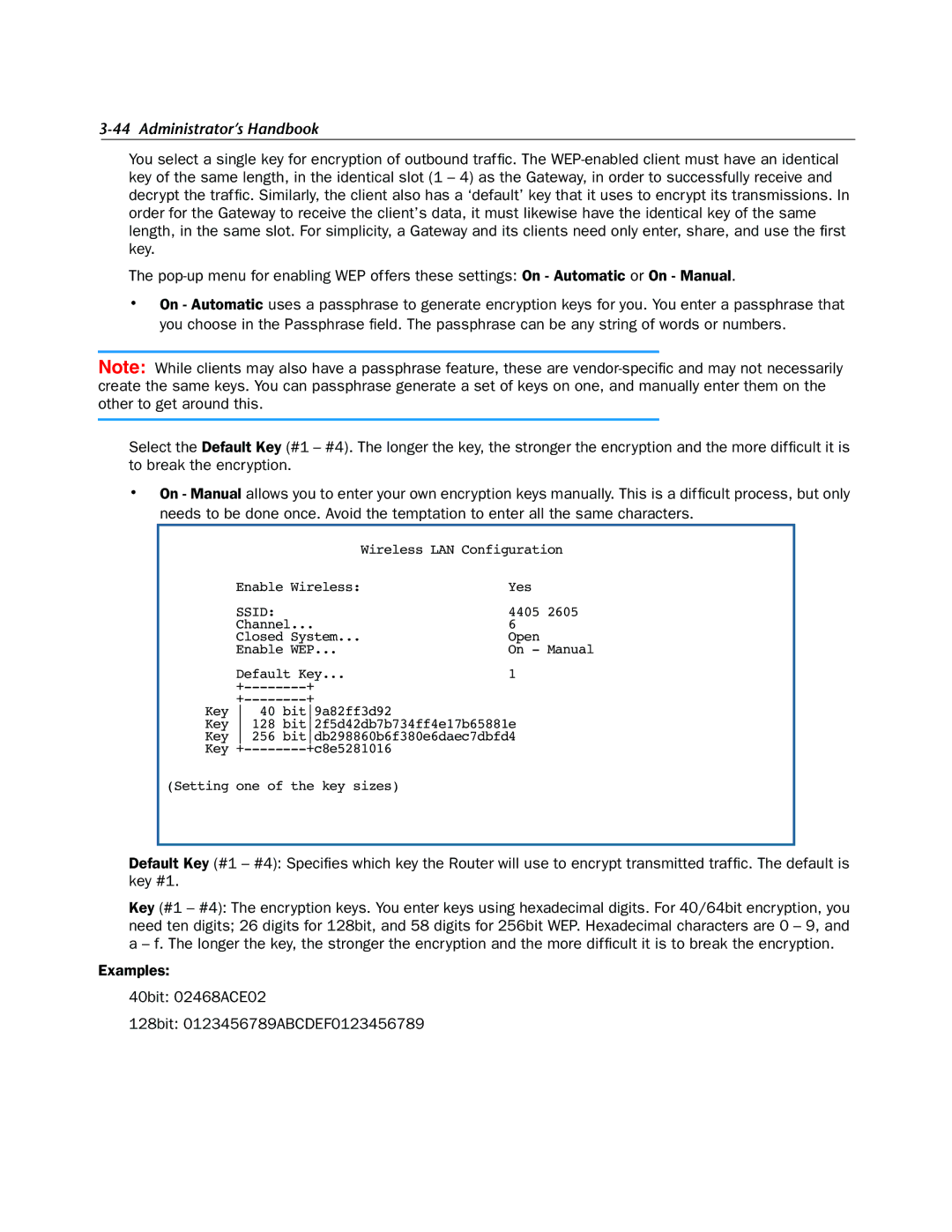
3-44 Administrator’s Handbook
You select a single key for encryption of outbound traffic. The
The
•On - Automatic uses a passphrase to generate encryption keys for you. You enter a passphrase that you choose in the Passphrase field. The passphrase can be any string of words or numbers.
Note: While clients may also have a passphrase feature, these are
Select the Default Key (#1 – #4). The longer the key, the stronger the encryption and the more difficult it is to break the encryption.
•On - Manual allows you to enter your own encryption keys manually. This is a difficult process, but only needs to be done once. Avoid the temptation to enter all the same characters.
| Wireless LAN Configuration | |
Enable Wireless: | Yes | |
SSID: |
| 4405 2605 |
Channel... | 6 | |
Closed System... | Open | |
Enable WEP... | On - Manual | |
Default Key... | 1 | |
| ||
| ||
Key 40 | bit9a82ff3d92 |
|
Key 128 | bit2f5d42db7b734ff4e17b65881e | |
Key 256 | bitdb298860b6f380e6daec7dbfd4 | |
Key | |
(Setting | one of the key sizes) |
Default Key (#1 – #4): Specifies which key the Router will use to encrypt transmitted traffic. The default is key #1.
Key (#1 – #4): The encryption keys. You enter keys using hexadecimal digits. For 40/64bit encryption, you need ten digits; 26 digits for 128bit, and 58 digits for 256bit WEP. Hexadecimal characters are 0 – 9, and a – f. The longer the key, the stronger the encryption and the more difficult it is to break the encryption.
Examples:
40bit: 02468ACE02
128bit: 0123456789ABCDEF0123456789
